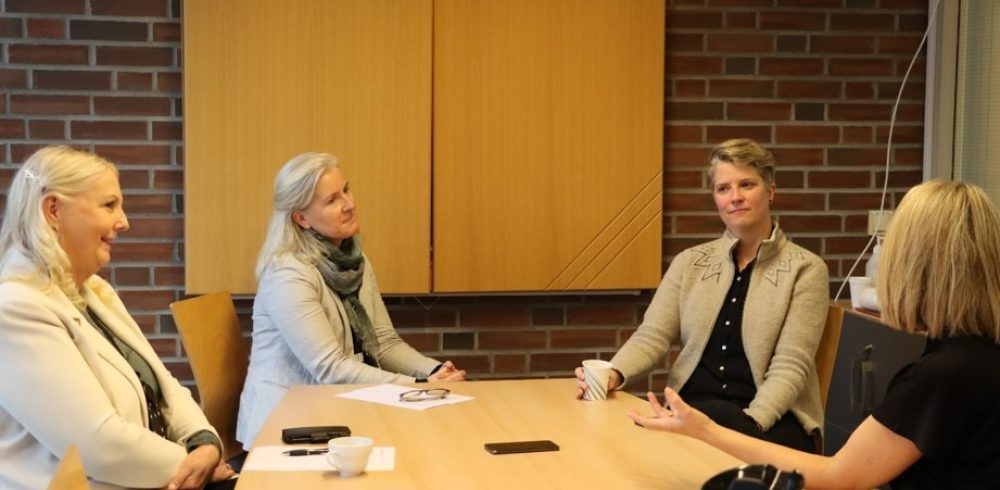Chemical Reduction for a Cleaner, Greener Future : In early 2022 workers in Porsgrunn Municipality, a region in Norway, made a pioneering change to their way of life, following the country’s announcement of its ambitious emission reduction target of at least 55 percent by the end of the decade.
In a landmark move, Porsgrunn was the first municipality to include the reduction of chemicals in its workplaces as a measure to reduce greenhouse gases.
Surprisingly, local employees immediately got behind the project, reducing the use of over 1,000 chemical products by the six-month mark. Having initially pledged to reduce the number of chemicals by 10 percent by 2023, today the number of chemicals reduced stands at 16 percent.
Aided by tools developed by leading SaaS provider EcoOnline, the municipality was able to create a robust inventory of all the different chemicals used throughout the region’s various workplaces, from nurseries, to fire stations and health care services.
Using a method developed by the United States Environmental Protection Agency, EcoOnline helped Porsgrunn to quantify the results, calculating that the region has already reduced greenhouse gas emissions by 40 tonnes, and has saved NOK 500,000, or £41,000, in the process.
Reducing chemical risk for people and planet
According to recent figures from the Norwegian Occupational Safety & Health Administration, over 200 Norwegians receive a cancer diagnosis every year due to exposure to dangerous chemicals in the workplace. In fact, a quarter of all lung cancer cases are attributed to work-related exposure to hazardous substances. Statistics also show that around 15 percent of all adult asthma cases are due to chemical exposure at work.
The problem is widespread, with the UK’s Health Service Executive similarly finding that an estimated 13,000 workers die each year from occupational exposure to chemicals or dust. According to statistics in the HSE’s Health and Safety at Work Report, as many as 12,000 workers passed away in 2022 due to lung disease caused by past exposure to substances like chemicals, with asbestos-related cancer accounting for over 2,500 of these deaths.
The safe handling and management of chemicals in the workplace is now an essential aspect of the UN’s Sustainability Goals 03, 06, and 12 – concrete recognition of the need for action. Looking at the statistics, Porsgrunn saw that the safe use of chemicals played a more significant part in the everyday life of employees and residents than previously realised.
As such, Porsgrunn municipality’s plan of action aimed to reduce the number of chemicals by 10 percent by 2023, one year into the initiative. At the project’s start in 2022, the region had just over 4,000 registered chemicals distributed among 44 businesses and 119 departments within the health service, urban development, education, and administration departments.
Porsgrunn councillor Rose-Marie Christiansen said: “I think many people associate chemicals with test tubes in laboratories. But when they learn that everyday products like detergents, glue, and pain are also chemicals, it’s easier to understand and relate to the fact that this is important for everyone.”
Porsgrunn’s HR advisor Tove Sørensen – who is responsible for leading and implementing the project, added: “Several people probably thought reducing chemicals as a separate decision in the climate budget would only gain a small group. Some say the project seemed only to fit ‘the nerds’!
“However, the fact that we got approval for this project has meant a lot to the employees. When I am out to guide various businesses, I hear that they feel that they are helping to make an effort for society and that they are making a difference that has an impact on health and the environment.”
Working together for safer workplaces
Many of the municipality’s employees were directly involved in the project through training and the practical implementation of the initiative.
Ewalina Pracon works as an assistant and safety representative at Vestsiden nursery school: “For me, the most important thing about this project is to be able to save the environment, as well as create a safer working environment for the employees, and for the children to play in.
“The challenge for many was that there weren’t good purchasing procedures in place, which led to many products being left unused, although the risk was still there. In other cases, it has been about replacing products with less dangerous alternatives or methods, such as by replacing dangerous cleaning products with simple microfiber cloths and water.”
The benefits of creating a greater awareness of the risks associated with chemical use have been felt throughout the municipality. Elisabeth Bjørsrud, a nurse in the municipality’s ambulatory service, said: “With fewer products, there has been less to think and worry about. This is not only positive for our own working environment, but also for all those we help in their own homes.”
Firefighters are one of the occupational groups that have a statistically high incidence of cancer due to hazardous chemical exposure in the workplace. Although this is primarily a result of exposure to toxic smoke, EHS advisor for Grenland Fire & Rescue, Silje Fehn, believes that the project has had many other positive effects.
“The most important thing about this project has been the focus on the health and safety of all crews”, she comments. “We have also significantly benefitted from coordinating routines for risk assessments and procurement, across the different fire stations at the municipality.”
The municipality’s engineering department uses hundreds of chemicals in its various workshops, wastewater and drainage facilities, and pumping stations. Within this, there are a number of high-risk hazardous chemicals such as ferric chloride, lye and other acids. With more than 80 employees working across the different units, Per Våtvik and his colleague Trond Lønberg are pleased to see that the project has helped them to improve staff awareness of the need to look for better, less harmful alternatives to reduce chemical risk.
Per Våtvik, Operations Manager at Porsgrunn Municipality Engineering Department, said: “We must ensure that all our people have easy access to the information they need to know about the safe handling of chemicals. We are actively looking for products that we can substitute with less harmful alternatives.”
Every little helps
Porsgrunn municipality is located in one of Norway’s largest industrial regions, with around 37,000 residents and 2,700 local council employees. As such, the municipality was keen to become more sustainable and reduce emissions throughout the entire supply chain.
“It doesn’t help if we live a nice, green life here, but at the same time we’re polluting another place on the planet”, says Yngvil Holt, the municipality’s Climate Coordinator.
Therefore, it’s been crucial that the project produce concrete, tangible results. In collaboration with EcoOnline’s software, the municipality has been able to gather and record data.
Today, Porsgrunn’s success story is rapidly spreading across different forums and networks – not only within Norwegian local government but further afield across various industries and other businesses.
“Now, says Helene Melby Brodersen, Global Head of Sustainability at EcoOnline, who worked closely with the municipality on the project, “we want to share our experiences so that other regions can follow suit and learn from our positive results. Exactly the same approach could be employed here in the UK by local councils, and we’ve shown that it’s possible to affect real change from small, low-cost measures.”
Manufacturing & Engineering Magazine | The Home of Manufacturing Industry News















